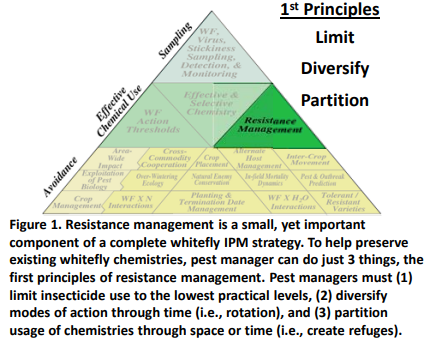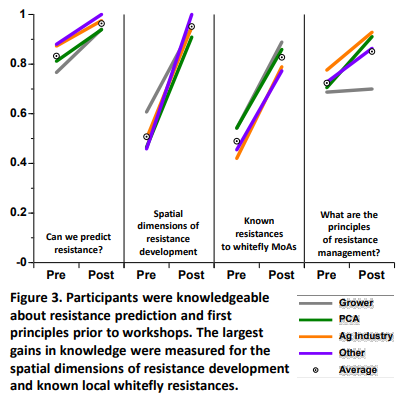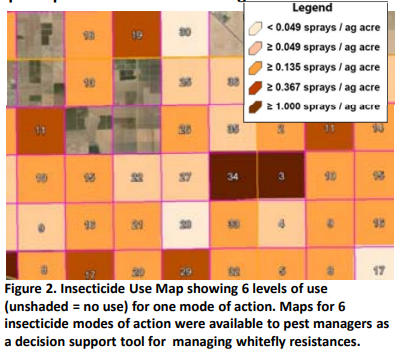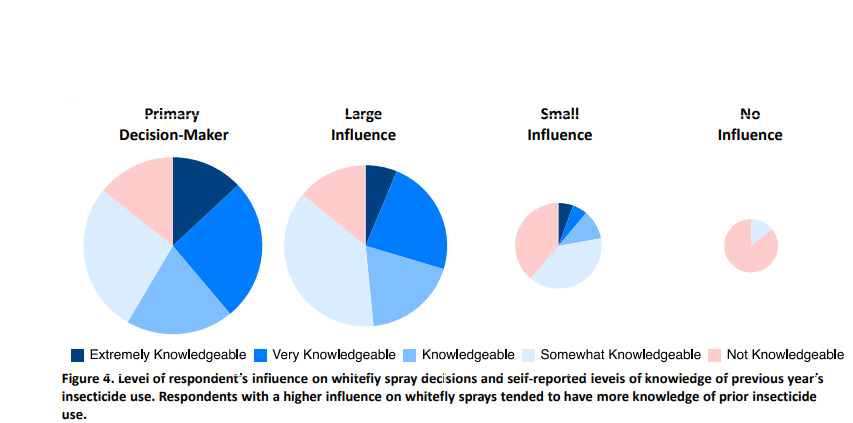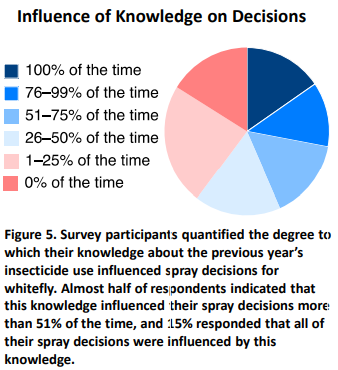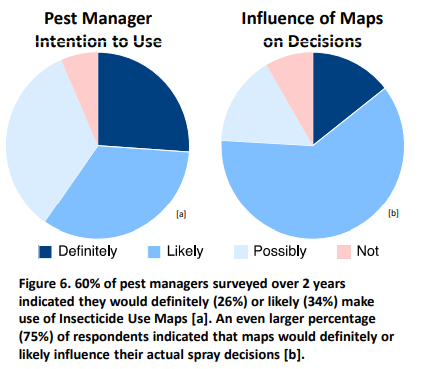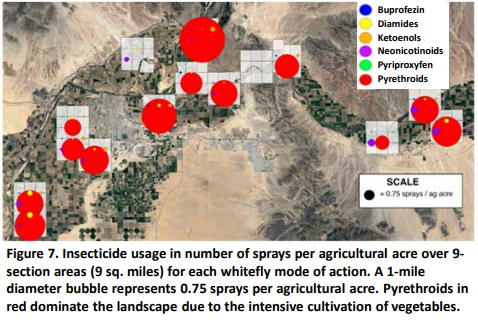Adoption of proactive resistance management practices to control Bemisia tabaci in Arizona and California
The Challenge
What if we could predict the probability of insecticide resistance before it occurred, based on spatial and temporal patterns of insecticide exposure of insects? We could help pest managers make spray decisions less likely to result in resistance, based on knowledge of previous insecticide use.
The goal of this project was to prepare pest managers to proactively manage whitefly resistance at the landscape level by providing them:
(1) Basic education on 1st principles of resistance management: limiting the use of chemistry, diversifying modes of action, and partitioning chemistry through space and time (supporting refuges) (Fig. 1); and
(2) Insecticide Use Maps as decision‐support tools for partitioning chemistry through space and time regionally.
We evaluated changes in grower / pest manager knowledge and intentions to adopt with future work planned for measuring insecticide use behaviors regionally to determine the success of our project.
Educating Stakeholders
Our education program (described above) reached ~300 farmers & pest managers in Arizona & California over 2 years and included workshops where pest managers learned to access and interpret Insecticide Use Maps.
We measured changes in knowledge (Fig. 3), intention to use maps (Fig. 4–6), and changes in behavior (Fig. 7) using pre & post surveys at meetings and online, a post‐season telephone survey of map users, and pesticide use data to evaluate outcomes. There were measureable gains in knowledge (Fig. 4).
Insecticide Use Maps
Maps depicting usage levels in 2014 and 2015 of the 6 whitefly modes of action at the section‐ level were provided to pest managers for use in making spray decisions (Fig. 2). Usage maps organize previously unavailable landscape level information and provide pest managers a tool that allows them to make educated decisions about insecticide use while following the principles of resistance management
Intention to Adopt
We surveyed pest managers on their intention to adopt Insecticide Use Maps in making whitefly spray decisions. Factors measured included (1) participant influence on whitefly spray decisions; (2) current knowledge of previous year’s sprays in Sections surrounding their fields, and (3) the extent to which knowledge of prior insecticide use influenced whitefly spray decisions. Outcomes indicate a relationship between decision‐maker status, knowledge, and intention to adopt (Fig 4– 6).
Change in Behavior?
Pest managers learned the fundamentals of resistance management and have self‐reported their intent to follow the 1st principles by using their knowledge of previous year’s insecticide applications (i.e., the Insecticide Use Maps we developed).
Adoption can be measured using pesticide usage records. These records will show levels of adoption through changes in usage patterns over space and time (e.g., Fig. 7).
Importance
This project demonstrated that a knowledge of spatial and temporal insecticide use patterns can inform whitefly spray decisions and enable pest managers to proactively reduce specific selection pressures and thereby theoretically reduce the potential for resistance development.
These principles are most effective for preventing resistances when communities are empowered with decision tools and an understanding of resistance principles. Our Insecticide Use Maps and trainings provided pest managers the tools and skills necessary to combat resistance.
